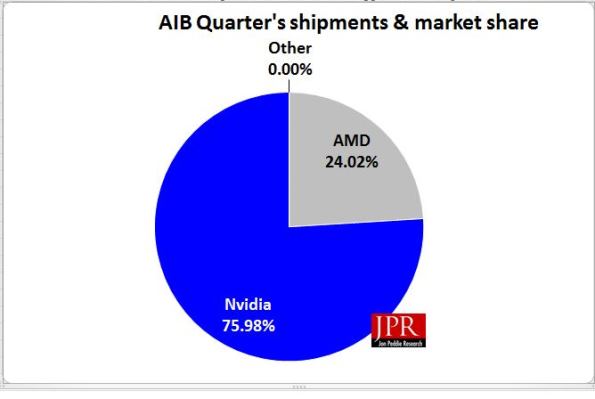- Apr 22, 2012
- 20,378
- 145
- 106
Not much to say, the trend continues for discrete cards. And expect it to continue in Q1 after the outlook from both companies.
Quarter highlights:


http://jonpeddie.com/publications/market_watch
http://jonpeddie.com/news/comments/gpu-shipments-marketwatch-q4-2014-charts-and-images/
Quarter highlights:
AMDs shipments of desktop heterogeneous GPU/CPUs, i.e., APUs decreased -30.0% from the previous quarter, but were up 4.6% in notebooks. AMDs discrete desktop shipments decreased -15.97% and notebook discrete shipments decreased -16.6%. The companys overall PC graphics shipments decreased -7.0%.
Intels desktop processor embedded graphics (EPGs) shipments decreased from last quarter by -4.4%, and notebooks decreased by -4.1%. The companys overall PC graphics shipments decreased -4.0%.
Nvidias desktop discrete shipments were up 5.51% from last quarter; and the companys notebook discrete shipments increased 0.1%. The companys overall PC graphics shipment increased 2.9%.
http://jonpeddie.com/publications/market_watch
http://jonpeddie.com/news/comments/gpu-shipments-marketwatch-q4-2014-charts-and-images/


